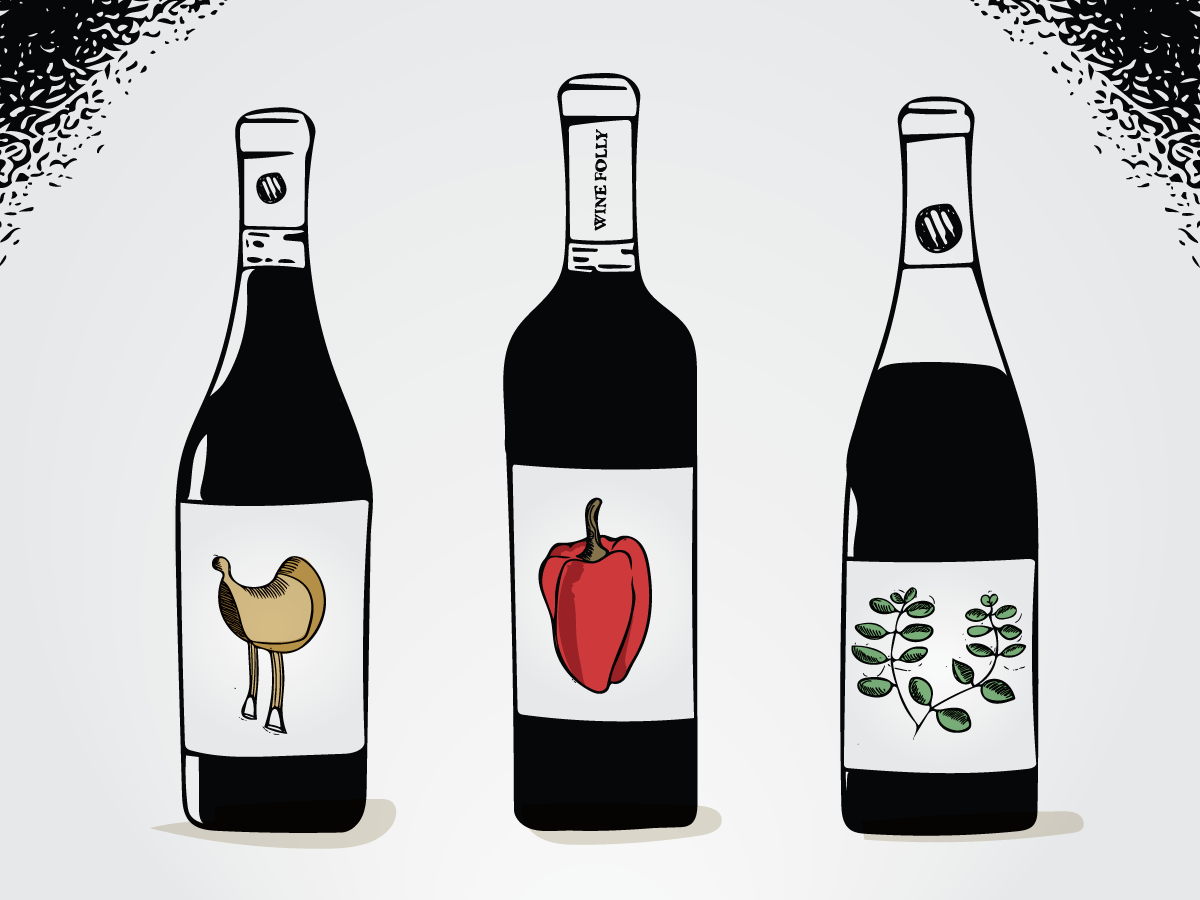As a wine descriptor, “dry” doesn’t imply an empty glass, it implies low to no sweetness. Not all wine has to be a berry bomb, fiercely fruity and sweeter than a Jolly Rancher candy. In fact, there are many wines that swing into the savory end of the taste spectrum. These wines satisfy our obsession with all things dry and bitter.
“Serious love for savory wines–the perfect accompaniment to food.”
It’s a common mistaken belief that savory wines are not fruity. In fact, most savory wines burst forth with fruit flavors, but they tend to lean towards the vegetable-fruit end of the spectrum and register notes such as bell pepper, tomato, and olive. Sound unconventional for a red wine? You might be surprised, but these flavor compositions and beneficial bitterness is exactly what makes still red wine the perfect accompaniment to food.
What is Beneficial Bitterness?
It’s useful to note that much of what is good for your health in wine tastes quite bitter. In fact, often the most bitter wines contain the highest levels of health-positive traits including tannin, anthocyanin (the red color), and ellagic acid. Sure, a spoonful of sugar helps the medicine go down, but the medicine itself – that’s the bitterness. Still, a successful savory red will balance all of its components so that the overall effect is not bitter, but savory.
Here are 6 dry red wines that show their savory side especially well:
6 Dry Reds Show The Savory Side of Wine

Savory wines lean towards the vegetable-fruit end of the spectrum and register notes such as bell pepper, tomato, olive and oregano
Chinon & Bourgueil French Cabernet Franc
- These are the two classic Cabernet Franc regions of the Loire Valley of France.
- Taste: Chinon and Bourgueil produce a very light and juicy style of Cabernet Franc with flavors of bell pepper, roasted red pepper, oregano, and potting soil.
- Food Pairing: Tomato and peppers are the big highlights in Cabernet Franc, so think fresh Mexican, Italian, or tomato-driven Indian dishes (Masala!) and you’ll find a delicious match.
Carménère
- A rare varietal found mostly in Chile.
- Taste: Cherry sauce, green bell pepper, pencil shavings, cocoa powder, and red
pepper flakes are classic Carménère - Food Pairing: Roasted pork, stuffed peppers, and dishes heavily spiced with
cumin.
Sangiovese
- Italy’s most widely planted red grape.
- Taste: Preserved sour cherries, dried oregano, aged sweet balsamic, dry salami,
espresso, and sweet tobacco. - Food Pairing: Cured sausages, hard cheese, and rich roasted meat.
Cannonau Italian Grenache
- Grenache wines from the Island of Sardinia.
- Taste: Leather, tobacco smoke, and dried cherries.
- Food Pairing: This might just be the perfect pepperoni pizza wine.
Nebbiolo The grape of Barolo wine
- Northern Italy’s floral but tannic red grape.
- Taste: Roses, sour cherries, tobacco, black licorice, leather, and black tea.
- Food Pairing: Mushroom risotto, garlic butter pasta, and dishes spiced with
fennel or anise.
Sagrantino
- Italy’s deepest blackest red wine found in Umbria.
- Taste: Black olive, black tea, plum sauce, potting soil, oregano, and black pepper.
- Food Pairing: Roasted pork, lamb, smoked meats, black lentils, and dishes spiced
with black pepper, plum sauce or oregano.